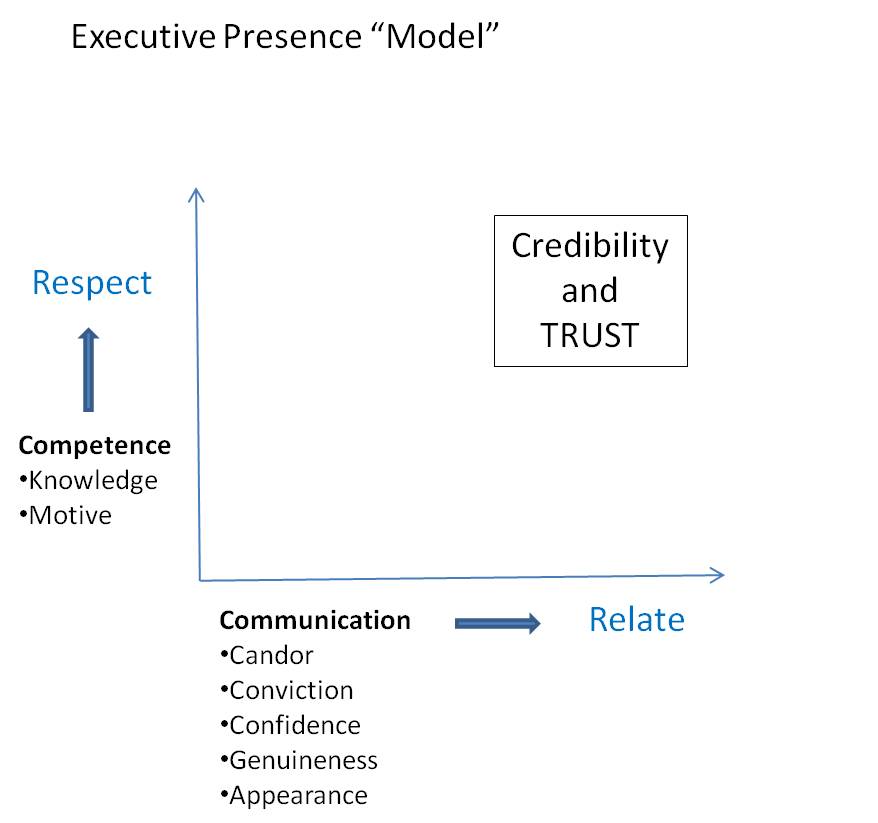

An air of optimism and assurance that convinces others you have the required strength, resources, and resolve to initiate and to lead. There are many factors to confidence, including nonverbal communication skills and consistency among mannerisms when communicating with team members. Choose your wardrobe and accessories carefully. Self-ConfidenceĬommunicate confidence both in what you say and how you say it. A look of sophistication and unflappability that creates the impression you are comfortable in your surroundings and able to handle adversity. Composure comprises self-awareness and the ability to present yourself in a disciplined yet engaging manner. Poise or ComposureĪn ability to control your emotions, recognize emotions in others, and manage your response to them. Ensure you only speak when making eye contact and manage your eye focus appropriately when communicating with more than one person. Your facial expression must match your message when your voice modulates pitch, volume, and pace. You convince others of your commitment to what you are saying and doing through expression, motivation, drive, and engagement. The willingness to remain neutral and consider other points of view without prejudging them. Character also includes ethics and morals and how they influence your work. Those with executive presence often have high emotional intelligence, helping them connect with the organization at all levels. Openness or CharacterĬharacter refers to inner traits and values. When possible, create your story and tell it in an intuitively clear and compelling way. Conciseness includes the ability to present all necessary details without overwhelming others. If you can’t articulate it clearly, then you are not ready to communicate it to others. Being interested in truth and honesty, a willingness to accept and engage the organization’s environment as it is, not as you would like it to be. People listen to an executive because of their powerful communication methods and because they believe they’re qualified to present the information. It also includes the methods by which you gather information and credit sources. Candor or CredibilityĬredibility refers to the language and resources that you use when providing information or direction. The following, while not exhaustive, provides ample explanation for understanding the dimensions, traits, or factors of executive presence.

Foundational: integrity, expertise, preparation.

We’ll show you all of them in the following table and then combine their definitions, as appropriate.
EXECUTIVE PRESENCE DEFINITION HOW TO
Teaching other how to think: how to plan, how to prioritize, and how to solve problems.Speaking in such a way that naturally attracts people.When you think of leaders you genuinely admire, most likely they exhibit traits and talents, such as… The Characteristics of Executive Presence Employees demonstrating these executive presence skills are often “fast-tracked” or found in leadership positions. When combined, they can make leaders and facilitators the galvanizing force of an organization. Hewlett claims that executive presence develops from combining three factors: Executive presence represents a persona that lets everyone around the person know that he or she is in charge, confident, and capable of leading others.

Executive presence derives from being authentic, building confidence in others, and inspiring others to take meaningful action. Executive presence is the ability to radiate a sense of poise, confidence, decisiveness, and dignity. In our complex, fast-paced world, it is vital to be noticed, heard, and trusted. For facilitators and most leaders, that means avoiding the first person singular, “I” or “me.” Note in the equation below, a very remarkable way to increase executive presence is to reduce the ego.
EXECUTIVE PRESENCE DEFINITION PLUS
Her formula suggests that executive presence is a function of Credibility PLUS Ease DIVIDED BY Ego. Amy Cuddy’s research indicates that executive presence can be calculated. The following article explains executive presence, then provides five tips on how to improve your executive presence. You can find many of the same traits among effective facilitators-traits you can learn and strengthen. In “Executive Presence: The Missing Link Between Merit and Success,” Sylvia Ann Hewlett affirms that executive presence is “an amalgam of qualities that telegraphs that you are in charge or deserve to be.”įortunately, you don’t need to be born with executive presence.


 0 kommentar(er)
0 kommentar(er)
